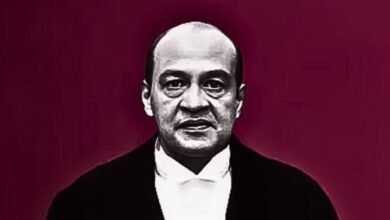SINKING ASSAM: Are we really interested in the North East regions in India?
Everyone knows the story of recurring floods in Assam. Every year we read about it in newspapers, see it on television. Yes, we ‘re not talking about metropolitan cities. We ‘re talking about the North-East, but Is that making any difference?
Perhaps, it doesn’t. We are only attached to it for the charm of its scenery. It’s suitable for going on a vacation. The way India is dealing with this situation is a perfect example of not learning from your past mistakes.
Every year approximately 2.6 million people are affected in India, and these floods cause a loss of 200 to 300 crores. More Rhinos in Kaziranga national park are dying due to this reason than because of poachers.
In this year’s floods, The overall death toll reached 50, with at least six more people losing their lives on Monday in rain-related incidents.
So what is the reason for these floods? It’s the Brahmaputra river, considered one of the most sacred rivers in India, and it’s enormous.

It’s so big that it’s even visible from space, and because of its components, it’s really hard to control the river. It contains not only water but also a combination of soil, clay, and nutrients. It carries around 2.12 tons of sediment per day during monsoon.
Floods are a part and a requirement of the ecology of Assam. The sediments carried by the floods make the soil very fertile and ideal for the varied crops being planted. They are a reality of Assam, but it has become a natural disaster rather than a natural phenomenon over the last few years.
In earlier days, if there was a flood then the animals would shift to higher ground in Kaziranga, but today, when the floods come, they submerge even the highest level. Climate change is not just a concept it’s real and we are making it worse, but we can change. We all know we have no influence over natural disasters and we can no longer regulate these floods but we can certainly stop these floods from transforming into devastating disasters.
So we’re offering some ideas today to support the cause:
- We can build sponge cities– getting so much monsoon rainfall and then shortage of water during the year is a common problem faced by Indian citizens. Sponge City is a form of technique for rainwater harvesting that involves making porous asphalt roads. Porous asphalt pavements, often used for parking lots, allow water to drain into a stone recharge bed through the pavement surface and to penetrate under the pavement in the soils. We can render and link these roads to a rainwater harvesting network. Sponge City is a theory by which a town can become self-sufficient to control its water inflow. This will naturally carry, purify, and drain water. All of this extra water can be used for urban agriculture, irrigation, and even drainage.
- Flood plains– we need to give these large rivers more room, in simple words, A flood plain is a flat area, which enables the river to flood but in a regulated manner. We have all learned that trees help to maintain the soil and avoid flooding, but construction on riverbeds is still being done in the name of growth and at the same time we are reducing the distance between settlements and riverbeds.
- Early alerts – Odisha is a state where cyclones often occur but since it is proactive, their disaster management system has steadily strengthened. They ensure that areas are evacuated before cyclones arrive. We must also ensure that all the information concerning these floods reaches the small villages in Assam on time. We must disregard the strategy of seeking a reactive solution. We have got to be proactive.
- Use of vetiver or khus – a rapidly growing grass for essential oils. A vetiver system can make a region flood-immune. Not only does it help to control flooding, but it will also provide opportunities for the locals.
We do need to be prepared for the situation or these tragedies will continue to happen.
Anyone can donate to the cause easily. finally, Assam is an Indian part, these people are members of our Indian family. Now is the time to adjust, if we are willing to travel to these areas for recreation. Then we can also discuss their problems and be the change we wish to see.
“Any of us can not make a difference but we can all make a difference”




